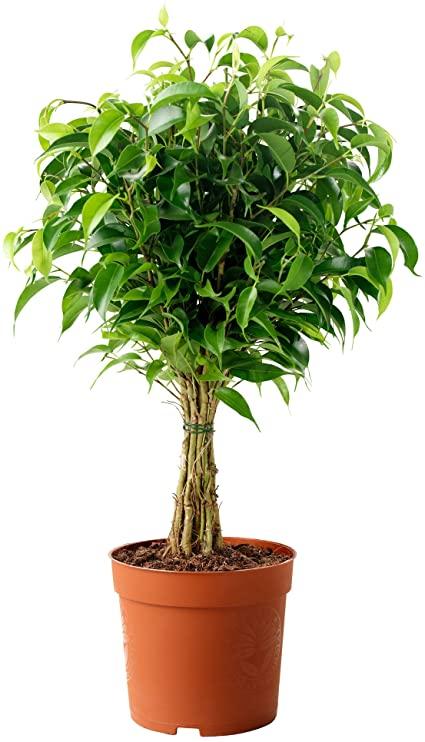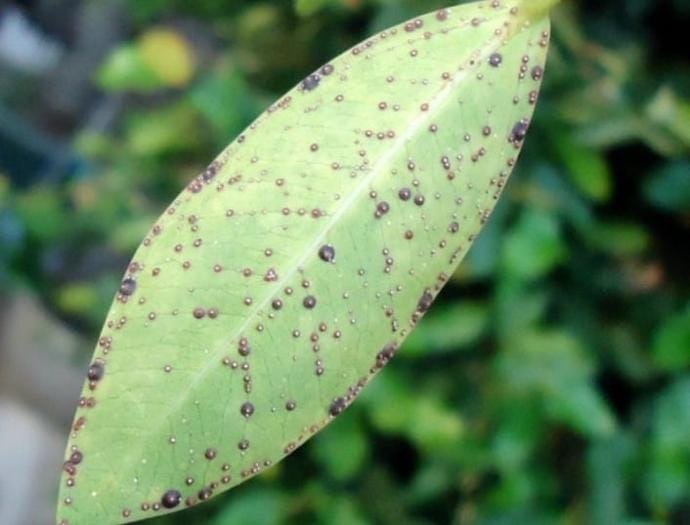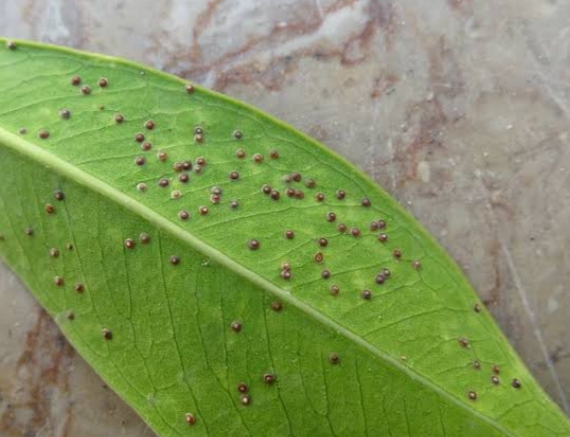Ficus Plant
Furcuria, possibly referring to a specific plant, may have varying care requirements. Generally, provide well-draining soil, appropriate sunlight, and regular watering. Pruning and fertilizing practices may vary based on the specific characteristics of this plant.

Habit
Tree
Height
Varies
Growth
Fast
Soil
Well Drained, Loamy
Shade
Indirect Light to shade
Moisture
Moist
Edible
No
Medicinal
No
Yield Per Plant
Ornamental use
NPK ratio
Moderate
life Span
No
Health Benefits
Yes
Suggested Grow Media or Potting Mix ?
50% peat moss, 30% perlite, 20% compost
Suggested Fertigation/Fertilizers
Fertilize every 4 weeks with a balanced fertilizer.
Common Diseases and Remedies
Leaf spot .
Leaf spot fungus - oval, brown/black spots, not limited by leaf veins, often with a yellow halo or purple band.
Proper Pruning and training.
HEALTH BENEFITS
- Contains fiber, antioxidants, and compounds beneficial for digestion and heart health.
- Some species have latex with antimicrobial properties.
What Is A Ficus Plant?
A Ficus plant is a genus of flowering plants in the family Moraceae, commonly known as the fig family. It includes a diverse range of species, including trees, shrubs, and vines, many of which are popular as houseplants or ornamental trees in gardens. The Ficus genus is native to tropical and subtropical regions around the world, including Asia, Africa, and Australia.

What are the different types of ficus plant?
There are numerous types of Ficus plants, each with its own unique characteristics and growing requirements.
1. Ficus benjamina (Weeping Fig):-
This is one of the most popular indoor Ficus plants. It has slender, drooping branches with glossy, dark green leaves. It prefers bright, indirect light and consistent moisture. Ficus benjamina is prized for its graceful appearance and air-purifying qualities.
2. Ficus elastica (Rubber Plant):-
The Rubber Plant is another popular indoor Ficus species known for its thick, leathery leaves and upright growth habit. It is relatively easy to care for and can tolerate lower light conditions than some other Ficus species. The leaves of the Rubber Plant are typically dark green, but variegated cultivars are also available.
 How to care for ficus plant?
How to care for ficus plant?
1.Location:
When choosing a location for your Ficus plant, it's important to consider its light and temperature preferences. Ficus plants prefer bright, indirect light. Place your Ficus near a window where it can receive plenty of natural light throughout the day, but avoid placing it in direct sunlight, especially during the intense afternoon hours. Direct sunlight can scorch the leaves of the plant, leading to damage or sunburn.
2.Sunshine:
Ficus plants prefer bright, indirect light, making them well-suited for locations with ample natural sunlight but without direct exposure to intense sunlight.
3.Soil:
The ideal soil for a Ficus plant is well-draining and rich in organic matter, providing a stable environment for healthy root growth.
4.Hydration:
Proper hydration is essential for the health and vitality of a Ficus plant.
 5.Nourishment:
5.Nourishment:
Nourishing a Ficus plant involves providing essential nutrients to support healthy growth and development.
6.Issues:
Ficus plants are generally resilient, but they can encounter several issues if their growing conditions are not ideal or if they are affected by pests or diseases. One of the most common issues with Ficus plants is overwatering, which can lead to root rot and other moisture-related problems. Symptoms include yellowing or drooping leaves, wilting, and soggy soil. To remedy this issue, allow the soil to dry out between waterings and ensure proper drainage in the pot. Conversely, underwatering can also be a problem for Ficus plants, especially if the soil becomes too dry. Symptoms include drooping or wilting leaves, leaf yellowing or browning, and dry, crispy foliage. To address this issue, water the plant thoroughly when the top inch of soil feels dry to the touch.
What are the benefits of the ficus plant?
Ficus plants offer several benefits, both aesthetic and practical, making them popular choices for indoor and outdoor landscaping. Like many houseplants, Ficus plants help improve indoor air quality by filtering out toxins and pollutants from the air. They absorb harmful chemicals such as formaldehyde, benzene, and trichloroethylene, which are commonly found in indoor environments, and release oxygen, helping to create a healthier living space. Ficus plants are prized for their attractive foliage, which adds beauty and greenery to indoor and outdoor spaces. Whether grown as houseplants, ornamental trees, or landscaping shrubs, Ficus plants provide a lush and tropical look that enhances the visual appeal of any environment.
 FAQS about growing ficus plant
FAQS about growing ficus plant
1.What are the different types of Ficus plants?
There are numerous types of Ficus plants, each with its own unique characteristics and growth habits.
1. Ficus benjamina (Weeping Fig)
2. Ficus elastica (Rubber Plant)
3. Ficus lyrata (Fiddle-Leaf Fig)
4. Ficus microcarpa (Ficus Ginseng)
5. Ficus pumila (Creeping Fig)
6. Ficus retusa (Ficus Bonsai)
2.What kind of soil does a Ficus plant need?
Ficus plants prefer a well-draining potting mix that retains moisture but does not become waterlogged. A suitable soil mix for Ficus plants typically consists of a blend of organic matter, such as peat moss or compost, and inorganic materials like perlite or coarse sand. This combination ensures adequate drainage while providing essential nutrients for the plant's growth
3.Can I grow a Ficus plant indoors?
Yes, you can definitely grow Ficus plants indoors. In fact, many varieties of Ficus plants are popular choices for indoor cultivation due to their attractive foliage and relatively low maintenance requirements.
4.How often should I fertilize my Ficus plant?
You should fertilize your Ficus plant regularly during the growing season, which typically occurs in spring and summer. A general recommendation is to fertilize your Ficus plant every 4-6 weeks during this period. Use a balanced, water-soluble fertilizer specifically formulated for indoor plants or houseplants.
5.Why are the leaves on my Ficus plant turning yellow?
Yellowing leaves on a Ficus plant can be caused by various factors, including environmental stress, watering issues, pest infestations, or nutrient deficiencies. Excess water in the soil can lead to root rot, causing the leaves to turn yellow and eventually drop off. Ensure that you're allowing the soil to dry out slightly between waterings and that the pot has proper drainage to prevent water logging. Conversely, underwatering can also cause leaf yellowing as the plant becomes dehydrated. Make sure you're watering your Ficus plant thoroughly and consistently, especially during the growing season.Changes in environmental conditions such as temperature fluctuations, drafts, or low humidity levels can stress the plant and cause leaf yellowing. Try to maintain stable growing conditions and avoid exposing the plant to extreme temperatures or drafts.


